Which Party Fabrics are Best for Your Special Occasion?
Silks, velvets, satins, and more are enticing and easier to sew than you might expect.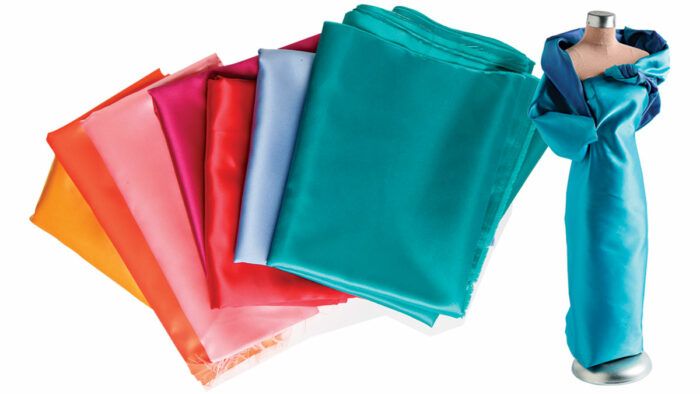
When it comes to sewing for dress-up events, fear not. Your basic sewing skills are definitely up to the task. Special occasions offer the opportunity for an exciting and easy sewing experience. Making a great gown doesn’t require advanced skills, and you can be as daring, innovative, and inventive as your creative self can be. Whether or not the cloth is pricey, there’s just no party without party fabrics.
Get the hang and the hand
The real flavor of the finished dress rests in the hand of the fabric. “Hand” is a term used to describe how the fabric feels and responds in your hand, and how it drapes on the body.
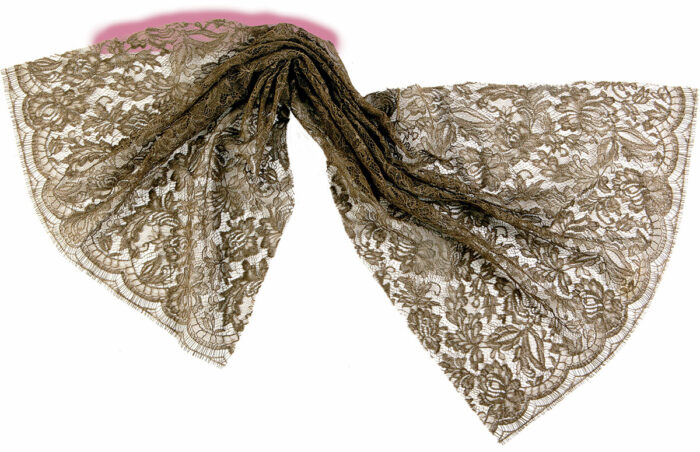
You may already have a vision of your dress—what do you see? Is it slinky, silky, and slippery? Starched and structured? Soft and floating? Body-hugging and form-fitting? Rich and textured? Over-the-top voluminous? Match the characteristics you envision to the fabric.
To shop for the right fabric, you have to unroll several yards and gather or pleat it in your hand and let it fall. Hold it up to yourself in the mirror and see how it hangs next to your body. It helps to have an understanding about what to expect from various weaves.
Organza and dupioni add volume
Structured woven fabrics such as organza or dupioni have a crisp hand that provides the strength to support a voluminous garment, and they’re easy to sew.
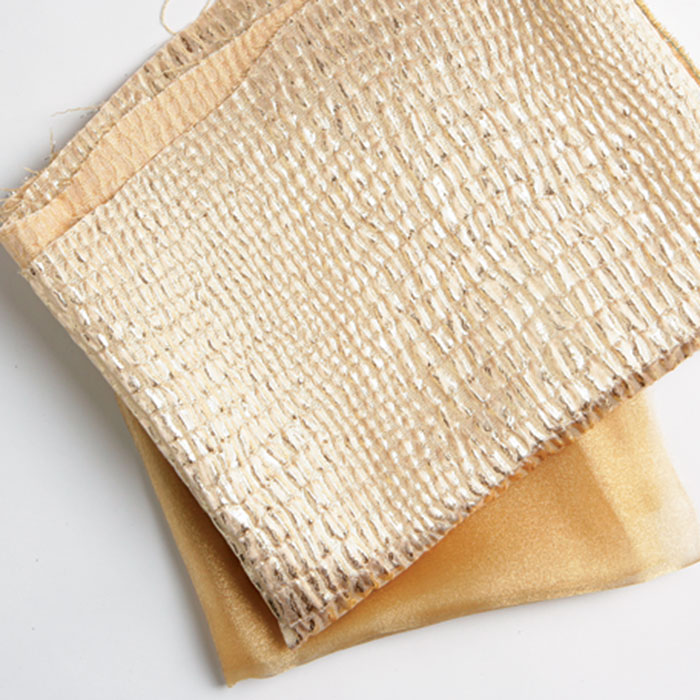
Organza can add strength to or stabilize a weaker fabric, yet it’s sheer and delicate looking. It provides a fresh, crisp look for feminine dressing such as first communion dresses, bridal wear, and garden parties.
Get all dolled up with satin
Satin is a broadly used term that applies to a variety of fabrics. Its main characteristic is a smooth sheen created by long surface threads.
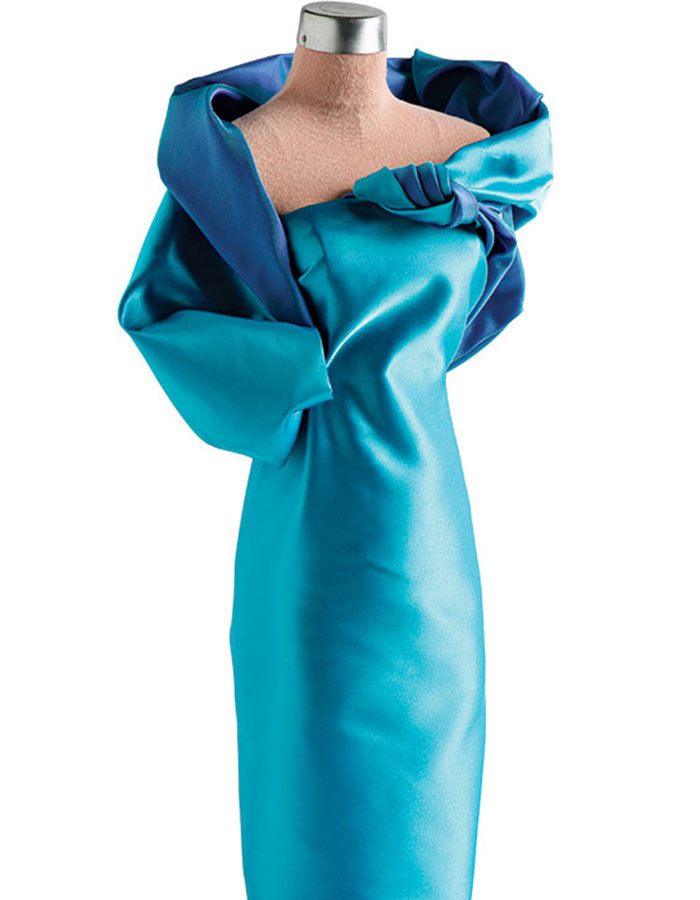
There are silk, cotton, wool, and synthetic satins as well as high-gloss synthetic satins and elegant matte satin blends. Both sides of crepe-back satins work equally well as the face fabric. This double-sided weave provides its own tone-on-tone coordinating fabric. Traditional bridal satin has body, is relatively easy to sew, and works well for fitted and voluminous styles.
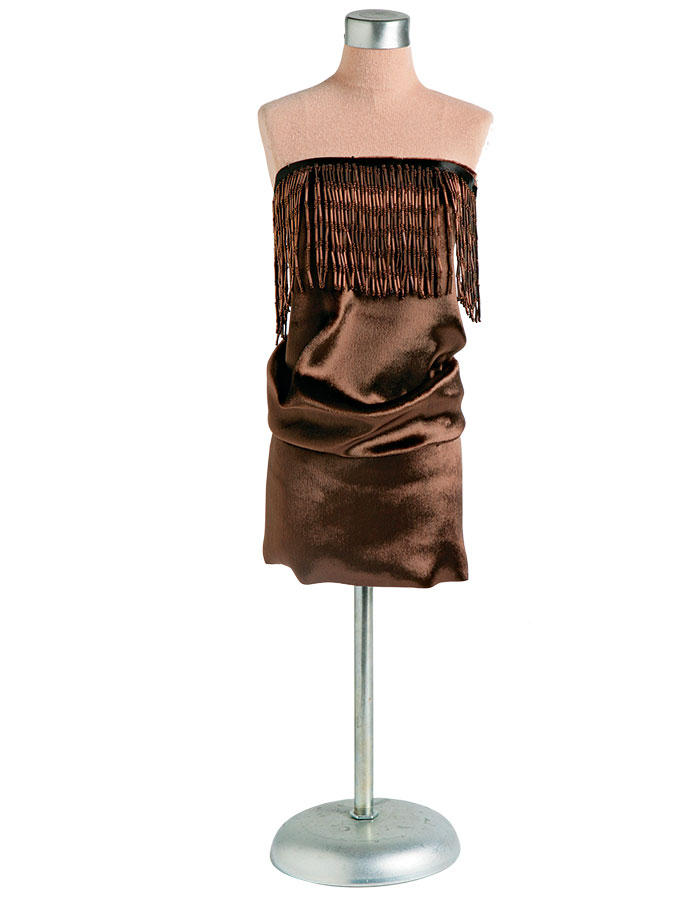
Unfinished satin edges ravel, though. Use pinking shears for edge finishing because serging can show through in pressing.
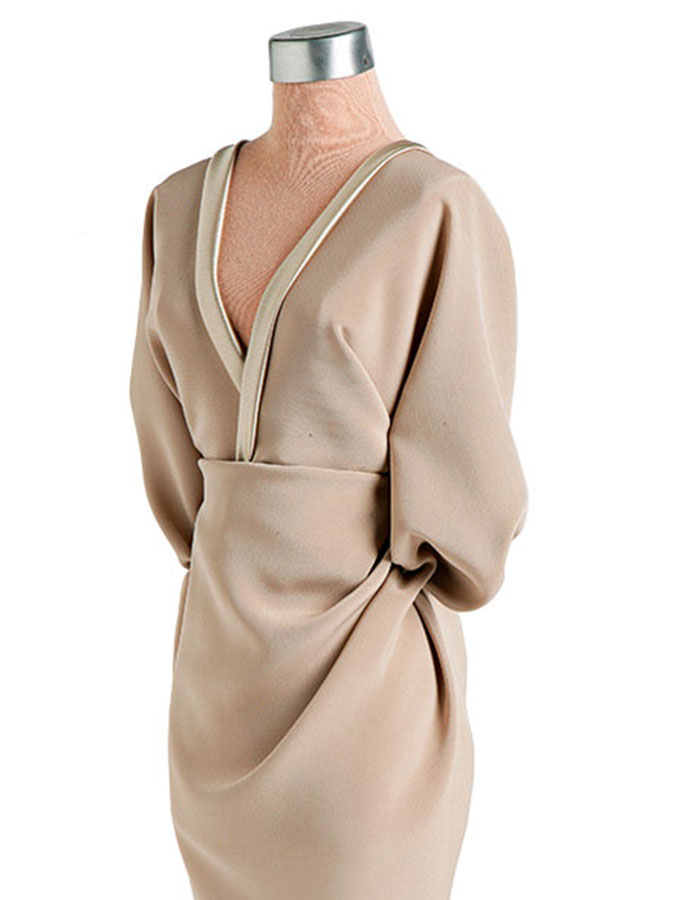
Charmeuse is like butter
For a fabric that shines like satin but feels like butter, use charmeuse. This is a sultry fabric reminiscent of lingerie. It falls close to the body and is the fabric used in the sophisticated gowns of the 1940s. The key to sewing charmeuse is keeping it perfectly on grain. Opt for silk charmeuse whenever possible; synthetic versions, usually made of polyester, don’t have the same soft drape and luxurious feeling.
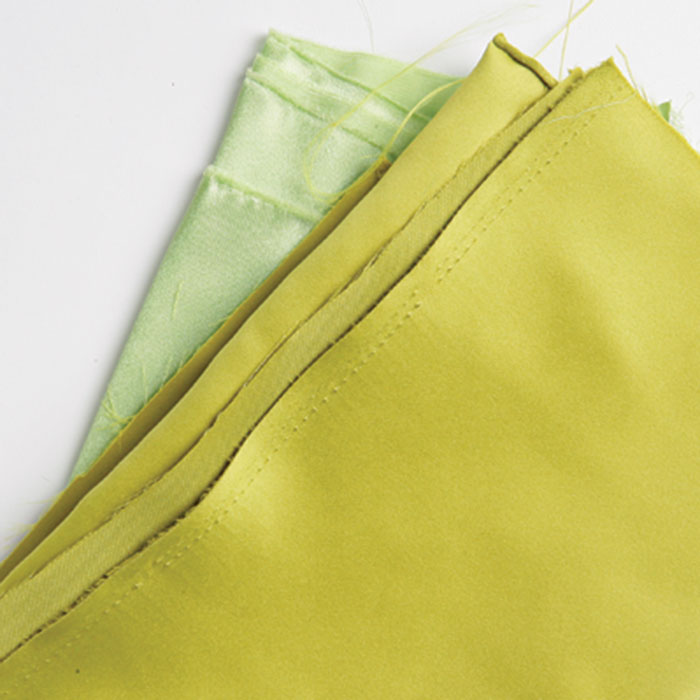
Use the velvet touch
Velvet typically has a pile side (a surface of fine plush) on a woven ground. Velveteen has shorter, denser pile on a heavier ground with minimal drape. Panne velvet is hard to miss with its wet-look shine and flattened pile.
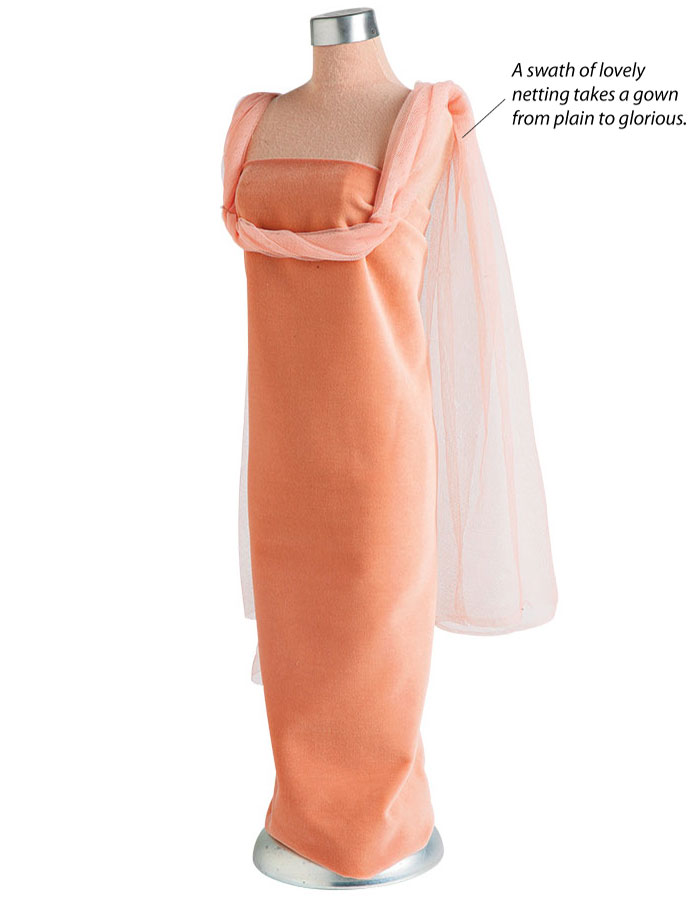
Silk velvet is often made of silk blended with rayon and is soft, washable, relaxed, and drapes beautifully—there’s nothing quite like it. Synthetic velvets usually have a crisper hand with more structure and less drape than silk velvet.
It’s sheer magic
There are three basic see-through fabrics: crisp sheers like organza, and soft, floaty, sheer chiffons and georgettes. The soft fabrics often either fall away from the body so they can catch air and billow, or are shirred or gathered into a more fitted silhouette. As a fitted garment, they need a lining of more stable fabric.
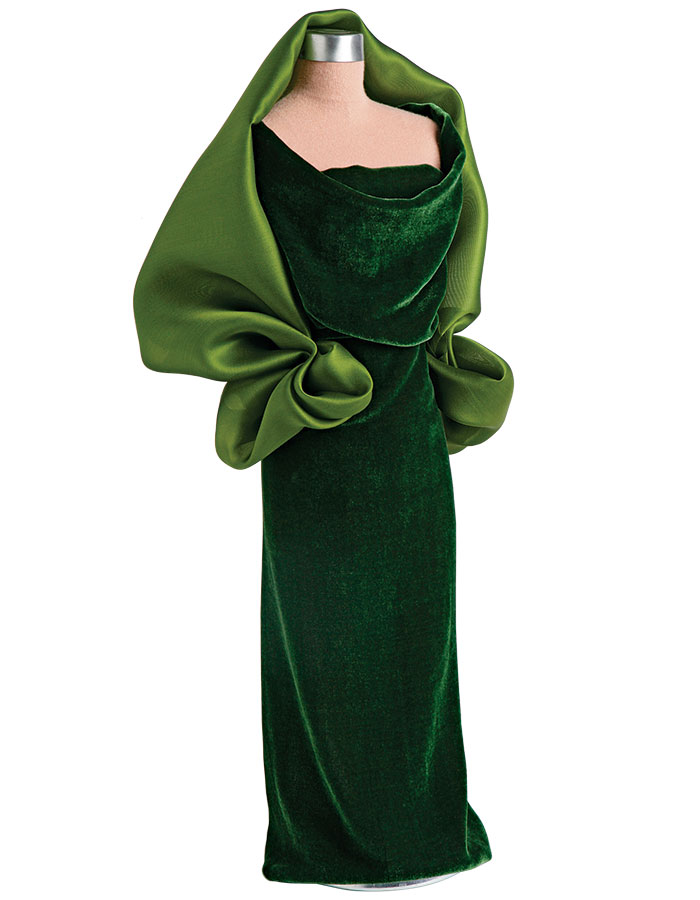
Chiffon and georgette have a tendency to shift and slide while sewing, and it’s sometimes difficult to keep track of their grain—but it can be done. Just pick a pattern with simple seamlines, and remember that all the architectural integrity of the garment will come from the inside lining and understructure.
Leather and lace make a statement
Leather isn’t the first thing that comes to mind for special-occasion material. However, take a trip to a specialty shop, and you’ll find patent and metallic leathers or frosted suedes that might be the perfect choice for your special-occasion design. You may also want to use them just for trim.
Leather and lace have similar characteristics. They’re usually more expensive than regular fabric, they are often purchased in a way other than by the traditional yard (such as by the skin or in very narrow widths), they provide a look that is on either side of mainstream, and they are cut and sewn with specialized techniques.
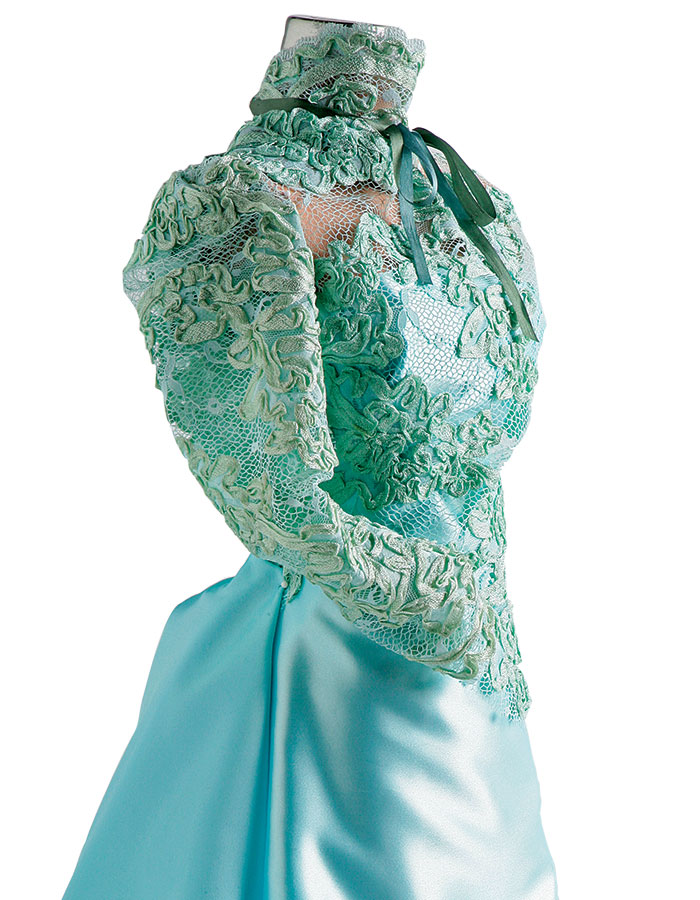
Though they may have a directional pattern, they don’t have the same type of grain that fabric has. You don’t have to finish their edges in normal ways, they don’t ravel, and seam construction varies. Lace is very forgiving. An alençon lace, for example, conceals stitches. You just lap seams or motifs and stitch.
Look regal with brocade
Brocades have an allover pattern that make them look like a tapestry. The regal fabric makes opulent-looking jackets, bodices, sheath dresses, skirts, and even trousers. It pairs well with smoother, softer fabrics such as chiffon. Brocade fabrics seem multilayered because of the numerous yarns that make up the patterns. These yarns fray, so make sure you line the garment. This stable fabric is easy to cut and sew, but remember to match the fabric patterns.
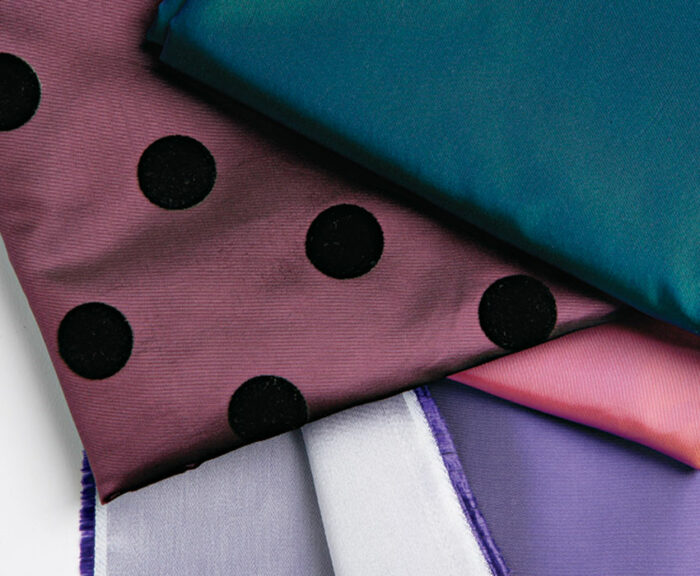
Metallics are everywhere
You can find shots of metallic in every fabric in the full range from organzas to velvets and brocades. Metallic fabrics require some experimentation. But beware—some of them can’t withstand heat, some shred easily, and others shrivel with water.
Read “Fabric Lab: Precious metallics” in Threads #194, Dec. 2017/Jan. 2018.

You should experiment with the effects of your iron and water on a swatch before starting, to identify the fabric’s handling and care requirements. Also, always use a method of sewing that suits the fabric.
—Judith Neukam is technical editor.
Excerpted from “Unraveling Party Fabrics” by Judith Neukam in SewStylish Summer 2007.
Photos: Scott Phillips.
Fabric: nyelegantfabrics.com.







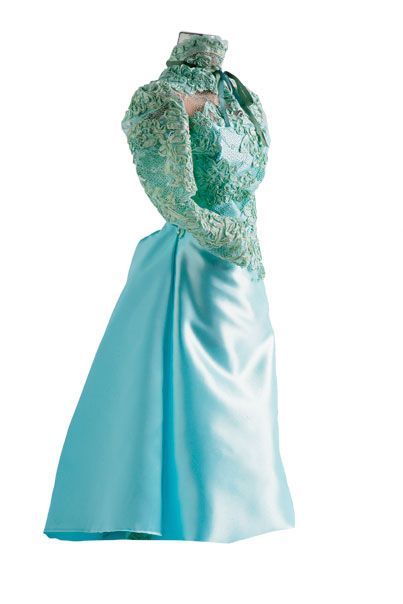
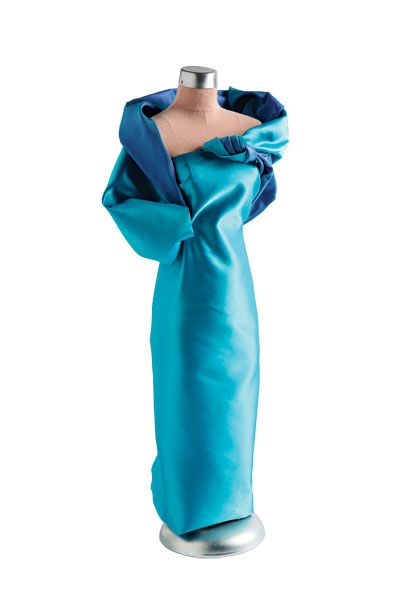
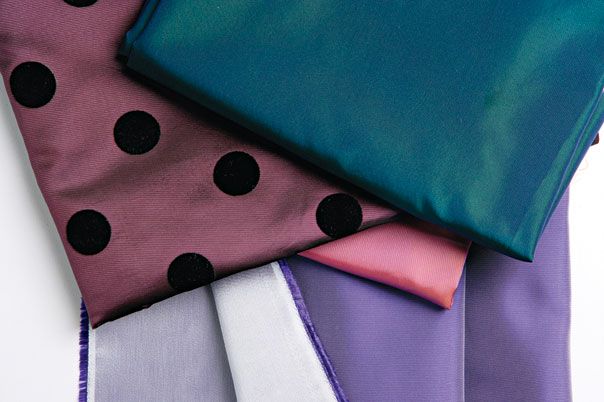
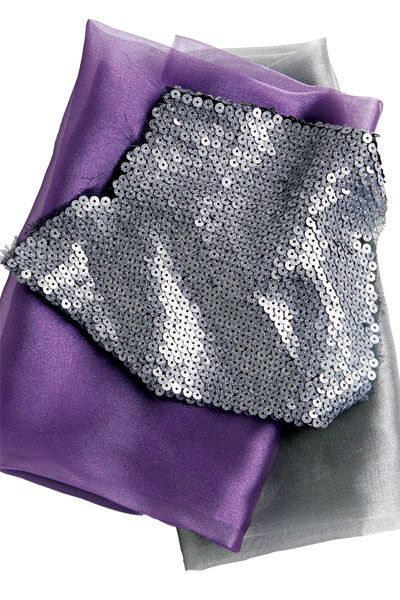


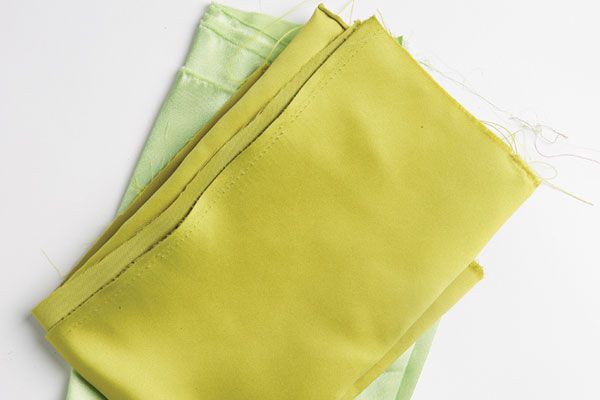
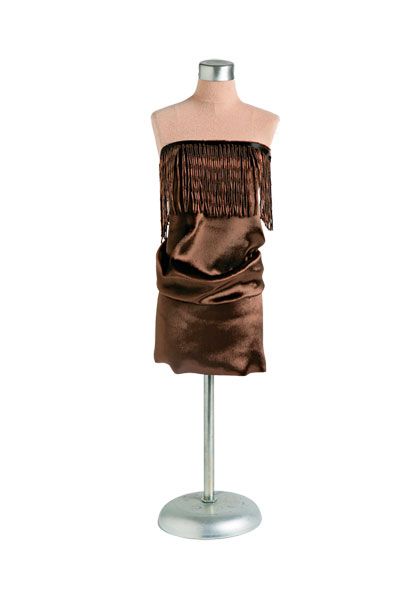

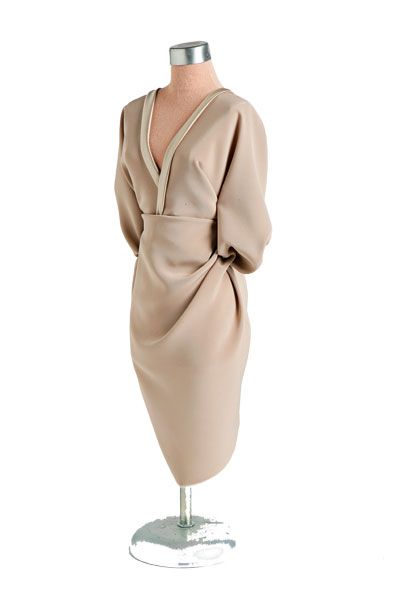

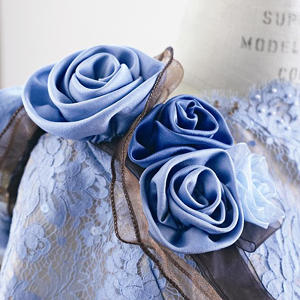
































Not a particularly useful article. Am surprised, frankly.
And shocked that anyone would recommend using a pinking shears to finish a satin seam, since all that does is speed up the raveling. And why was there no mention of french seams for the sheers?
Pretty lightweight for Threads. If you go through your own archives, you'll find much better info. I've kept everything from your first issue and the good stuff is all in there.
I know there are sewers out there that have had the nightmare of sewing on that sequin fabric that gum's up the sewing needle every few inches. Is there anyone out there that has had success sewing on that devil of a fabric?
For me it is a study in crying, weeping, and waling and gnashing of teeth. Then running from the house screaming and pulling my hair out. I have seen uses for it but cant figure out how to attach it. Do I glue it with Fabric glue?
Any body got anything?
boweavil,
Good for you. I am considering letting my subscription elapse because information in the current issues is too elementary and does not reflect a high level of skill.
This article ran in Sew Stylish, not Threads. My perception of the difference between the two magazines is that Sew Stylish is directed more to the younger (and presumably less experienced) seamstress. (I originally typed "sewer" but visually it looked like the pipe that drains waist water from your house. However many men as well as women sew and "seamstress" sounds sex-specific.)
Whatever the appropriate term, Sew Stylish seems to be oriented more towards inspiring young people to get over their fears and helping them assume an "I can do it" attitude, whereas Threads seems more geared to inspiring those with some experience under their belt to improve their sewing and design skills. Because of their drama, expense and often more difficult working characteristics (i.e. sometimes they can ravel easily, be slippery, or gum up needles as mentioned in these comments) fancy fabrics can be somewhat intimidating to a novice at the sewing machine. (See how smoothly I escaped that terminology trap?!). While I especially agree with the comment re pinking shears and raveling, I think the article does tend to inspire confidence in attempting projects in these dressy fabrics. It also provides a good overview of these textiles, helping to unravel their mystery, no pun intended.
Each of us must find our own level of both comfort and challenge in the projects we attempt. I think the two magazines compliment each other in that respect, one providing a more simple introduction to the craft and one geared more towards taking your skills to the next level. For those with advanced sewing and/or design skills, neither of these publications may be sufficient. This is probably exactly why many of the more advanced sewing blogs can sometimes be mystifying to myself.
What I really wish is that some of you who feel you are "outgrowing" either of these publications would contribute some articles to help those like me, who developed good skills in earlier years, had our sewing pursuits interrupted by work and family obligations for many years, and then re-entered the world of sewing discovering that the machinery involved is now computerized, programmable and has more RAM than my 1st ten computers. Talk about needing a complete basic re-orientation into a once-familiar playing field?!! You can see I'm not even sure how to label one who sews!! I feel like the Rip Van Winkle of the fabric world.
YARRH, shiver me timbers! I could sure use your help. I seriously doubt that I'm alone in re-entering this brave new world. In other words, if this is too basic for you, then send some of that mighty knowledge down the line. Everyone can teach someone who knows less than they do, and teaching a skill to another is, after all, the highest form of learning. So if there's any way you can, please exalt yourself my way. I'm not too proud to learn from anyone.
Thank you all for you comments regarding this post. It was, in fact, originally written for Sew Stylish which is geared toward a beginner to intermediate sewing audience and easing the initimidation factor of expensive, dressy fabrics was foremost in mind. We posted this to support our fancy fabrics challenge, in which sewers of all skill levels, including beginners, often enter. Look for more posts, and more advanced techniques, regarding fancy fabrics to come soon.
@jestersmother: I have heard to sew with a layer of waxed paper over your project. It prevents the "gummies." I have also heard it useful for sewing with metallic thread that tends to break easily. I haven't had a need, so I don't know if it will work, but thought I would pass it along.
I saw it on a forum board for Irish Dance dressmakers who use a lot of sequins and such.
The ASG (American Sewing Guild) is starting to use the term Sewist. A number of other occupations seem to be heading into the 'ist ending, less sexist. :-)